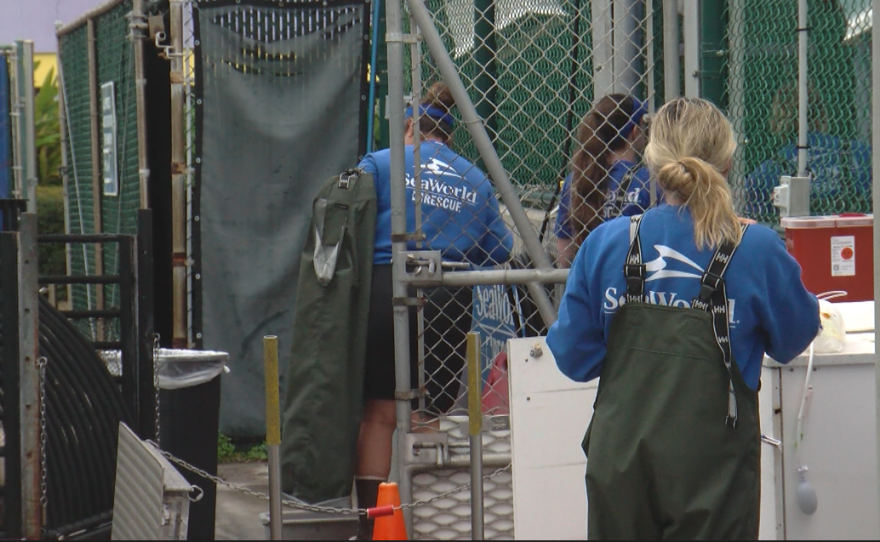A toxic algae bloom in coastal waters from San Luis Obispo to San Diego has killed dozen of marine animals, including whales and dolphins, and the area has been labeled an extreme danger zone by health and environmental groups.
The toxic algae bloom, a product of a neurotoxin called domoic acid or DA, has been detected for the fourth year in a row, and experts are calling this one the worse yet.
"It's the worst we've ever seen here in Southern California on many different fronts, but dolphin strandings, it's unprecedented," John Warner, the CEO of the Marine Mammal Care Center in Los Angeles, told KABC.
A map from the Southern California Coastal Ocean Observing System shows where the high amount of domoic acid at the center of the toxic algae bloom is spreading along the Southern California coast and killing numerous animals.
There have been more than 50 dead and dying dolphins found along the Los Angeles County coast this week. There were 16 discovered in San Diego on Sunday.
Debris from the wildfires and fertilizer runoff are suspected of contributing to the toxic algae spread. It is eaten by small fish, which are then eaten by marine mammals and birds, leading to potentially deadly toxic overdoses.
Sea lions and birds can be saved, but it is almost always fatal for dolphins.






